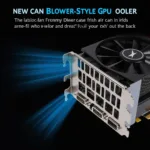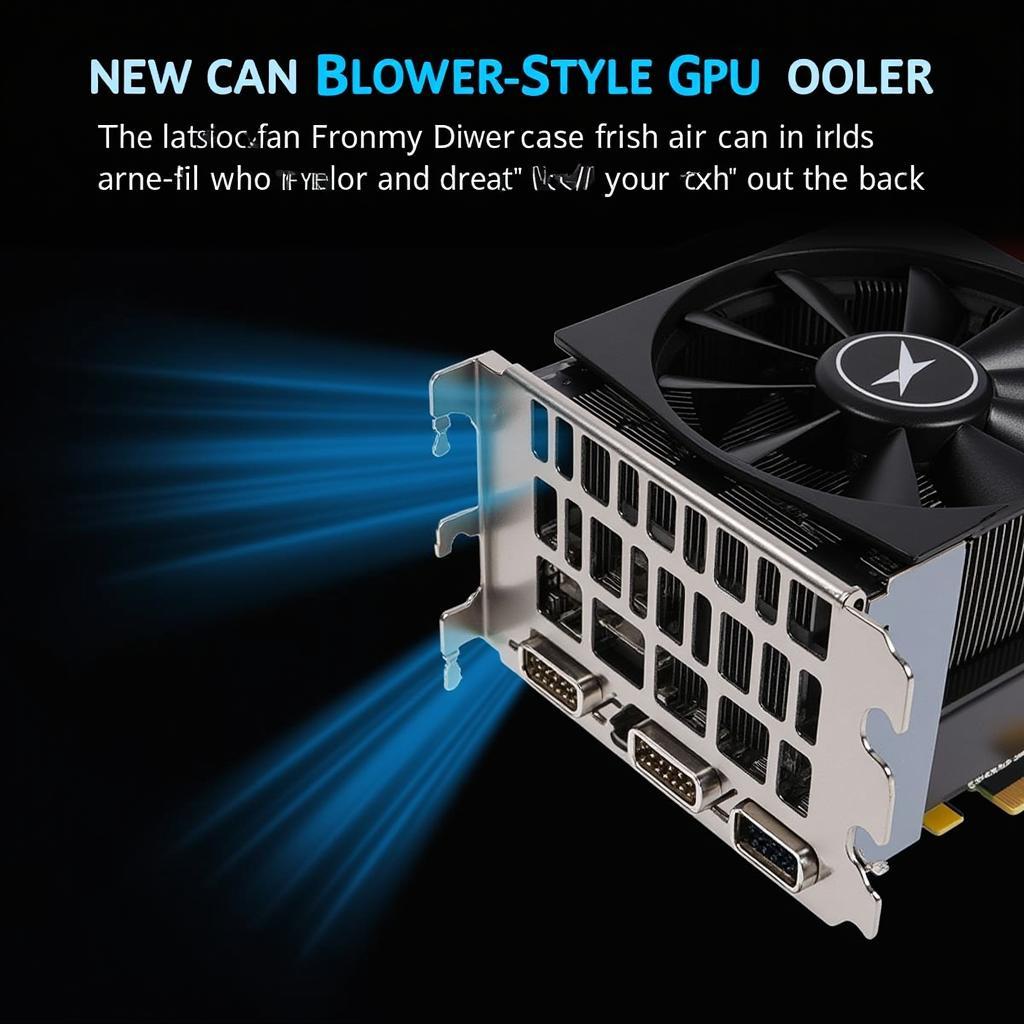Hvls Ceiling Fans, also known as high-volume, low-speed ceiling fans, are becoming increasingly popular for their ability to efficiently cool large spaces. But what exactly are they and how do they work? This comprehensive guide will delve into everything you need to know about HVLS ceiling fans, from their benefits and applications to installation and maintenance.
What are HVLS Ceiling Fans?
HVLS ceiling fans are large-diameter fans designed to move large volumes of air at low speeds. They are typically 8-24 feet in diameter and have a much larger blade span compared to traditional ceiling fans. These fans are engineered to create a gentle, consistent airflow that circulates throughout a large area, effectively cooling the space and improving comfort.
How do HVLS Ceiling Fans Work?
Unlike traditional ceiling fans that rely on direct airflow to cool, HVLS fans work by creating a column of air that rotates around the fan. This rotation creates a “wind tunnel” effect that pulls air from the lower level of the space and pushes it towards the ceiling. This process circulates air throughout the entire space, ensuring a more consistent and comfortable temperature.
Benefits of HVLS Ceiling Fans
HVLS ceiling fans offer a range of benefits over traditional cooling systems, making them an attractive option for various applications. Here are some key advantages:
- Energy Efficiency: HVLS fans consume significantly less energy than traditional air conditioners, making them a cost-effective cooling solution.
- Improved Air Circulation: HVLS fans create a gentle, consistent airflow that circulates throughout the entire space, ensuring more uniform temperature distribution and better air quality.
- Reduced Energy Costs: By effectively circulating air, HVLS fans can help to reduce the reliance on air conditioners, leading to significant savings on energy bills.
- Increased Comfort: The consistent airflow generated by HVLS fans can create a more comfortable environment by reducing stagnant air and hot spots.
- Versatile Applications: HVLS fans can be used in a wide range of spaces, including warehouses, manufacturing facilities, retail stores, gymnasiums, and even residential homes.
Applications of HVLS Ceiling Fans
HVLS ceiling fans are versatile and can be used in various settings, offering efficient cooling solutions for different needs. Here are some common applications:
- Industrial Facilities: HVLS fans can be used in warehouses, manufacturing facilities, and distribution centers to improve worker comfort and productivity by efficiently circulating air and reducing heat buildup.
- Retail Spaces: In retail stores, HVLS fans can enhance customer comfort and create a more inviting atmosphere by keeping the air cool and circulating fresh air.
- Sports Arenas and Gyms: These fans are ideal for large sports arenas and gymnasiums, as they effectively cool the space and improve air quality for athletes and spectators.
- Residential Homes: HVLS fans can also be used in residential homes, particularly in large open-plan living areas, to create a more comfortable and energy-efficient environment.
Choosing the Right HVLS Ceiling Fan
Selecting the appropriate HVLS ceiling fan for your specific needs is crucial for maximizing its benefits. Here are some factors to consider:
- Space Size: Determine the area you need to cool and choose a fan with a blade span that adequately covers the space.
- Ceiling Height: Ensure the fan’s height is compatible with your ceiling height, considering the minimum clearance requirements for safety.
- Airflow Requirements: Evaluate your specific airflow needs based on the size of the space, the type of activity, and the desired level of comfort.
- Energy Efficiency: Choose a fan with a high energy-efficiency rating to maximize savings on your energy bills.
- Noise Level: Consider the noise level of the fan, especially if it will be used in a sensitive environment.
Installation and Maintenance
Installing and maintaining HVLS ceiling fans properly ensures optimal performance and longevity. Here are some key considerations:
- Professional Installation: For optimal results and safety, it is highly recommended to engage a qualified professional for installation.
- Proper Mounting: Ensure the fan is securely mounted to the ceiling structure, following the manufacturer’s guidelines.
- Electrical Wiring: Verify that the electrical wiring is correctly connected to the fan and meets safety standards.
- Regular Cleaning: Clean the fan blades and motor periodically to prevent dust buildup and maintain efficient airflow.
- Motor Lubrication: Lubricate the fan’s motor according to the manufacturer’s instructions to ensure smooth operation.
HVLS Ceiling Fans: A Cost-Effective and Eco-Friendly Solution
HVLS ceiling fans are becoming increasingly popular as a cost-effective and environmentally friendly alternative to traditional cooling systems. Their energy efficiency, improved air circulation, and versatility make them an excellent choice for a wide range of applications.
FAQ:
Q: How much do HVLS ceiling fans cost?
A: The cost of HVLS ceiling fans can vary depending on size, features, and brand. Typically, they range from $1,000 to $5,000 or more.
Q: Are HVLS ceiling fans noisy?
A: Modern HVLS fans are designed to be relatively quiet, especially when compared to traditional ceiling fans. However, it is important to consider the noise level when choosing a fan for sensitive environments.
Q: How much energy do HVLS ceiling fans save?
A: HVLS fans can save a significant amount of energy compared to traditional air conditioners. The exact savings will depend on the size of the space, the climate, and the usage pattern.
Q: How do I choose the right size HVLS ceiling fan?
A: The size of the fan should be determined based on the area you need to cool. A general rule of thumb is to choose a fan with a blade span that covers about 1/3 to 1/2 of the space.
Q: Can HVLS ceiling fans be used in residential homes?
A: Yes, HVLS fans are becoming increasingly popular in residential homes, particularly in large open-plan living areas. They can create a more comfortable and energy-efficient environment.
Conclusion
HVLS ceiling fans are an innovative and efficient cooling solution that offers numerous benefits over traditional systems. Their energy efficiency, improved air circulation, and versatility make them a valuable investment for various applications. By carefully considering factors like space size, airflow requirements, and energy efficiency, you can select the right HVLS ceiling fan to create a more comfortable, productive, and sustainable environment.

